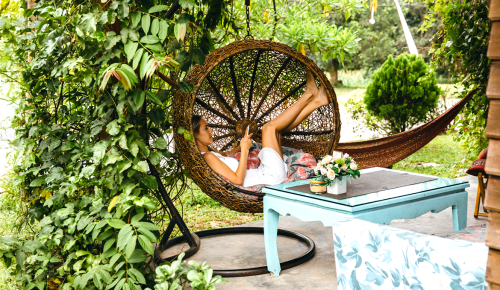Our editors independently select these products. Making a purchase through our links may earn Well+Good a commission
Caring for your plants by way of watering them, pruning them, and repotting them can facilitate having a legitimate personal connection with them. And in light of that connection and effort paid to keep them alive, the event of a plant dying can yield serious disappointment, which is why some folks have come to avoid especially finicky greens, like the infamously tricky fiddle-leaf fig. If you’ve had a rough time contending with a fiddle-leaf fig or just want to avoid the undue stress they can bring, the good news is that there other options to scratch your fiddle-leaf fig itch. Enter: low-maintenance ficuses in the fiddle-leaf fig family.
Experts in This Article
Brandon Hurst is a plant expert and the owner of Brandon the Plant Guy in Los Angeles’s San Fernando Valley.
gardening expert at Bloomscape
Do know that you’d be in good company with this branching out of plant species; plant company Bloomscape predicts that low-maintenance ficuses will be highly shopped in 2022. “Ficus houseplants tend to command lots of attention—whether due to their stately form, interesting leaves, or unique coloring,” says Lindsay Pangborn, gardening expert at Bloomscape. “They also thrive in indoor environments, not requiring much care outside of regular watering.”
With that in mind, find expert suggestions for low-maintenance ficuses below to spruce up any space.
5 low-maintenance ficuses that aren’t fiddle-leaf figs
1. Ficus elastica, aka rubber tree plant
“The rubber plant, or ficus elastica, is one of the oldest species to be grown as a houseplant in the United States,” says Pangborn. The rubber tree can tolerate more direct sunlight than other ficuses, Pangborn adds, which makes the plant the perfect addition to a south-facing window.
If you’re looking for a statement plant, you might enjoy the burgundy rubber tree, which is more shrub-like and has dramatic, dark foliage. Rubber trees can grow quite large, even indoors, so they’ll take up just as much space as your fully grown fiddle-leaf fig.
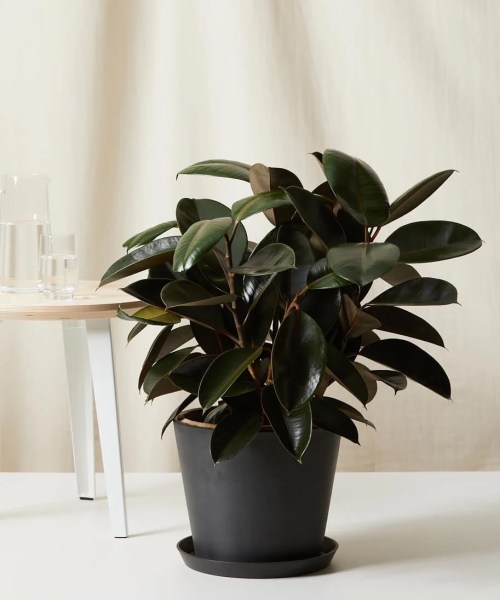
Burgundy Rubber Tree Plant — $169.00
2. Ficus benghalensis, aka ficus Audrey
This is probably the closest you’ll get to the look and feel of a fiddle-leaf fig—but you run less of a risk of disappointment, because as one of several low-maintenance ficuses available, this plant isn’t as easy to kill.
Part of the reason ficus Audrey provides fiddle-leaf fig vibes is because of the thicker veins in its leaves, says Brandon Hurst, owner of Brandon the Plant Guy in Los Angeles’s San Fernando Valley. If you opt for this plant, Pangborn wants you to keep in mind that “this tree thrives in a spot with medium to bright indirect light.”
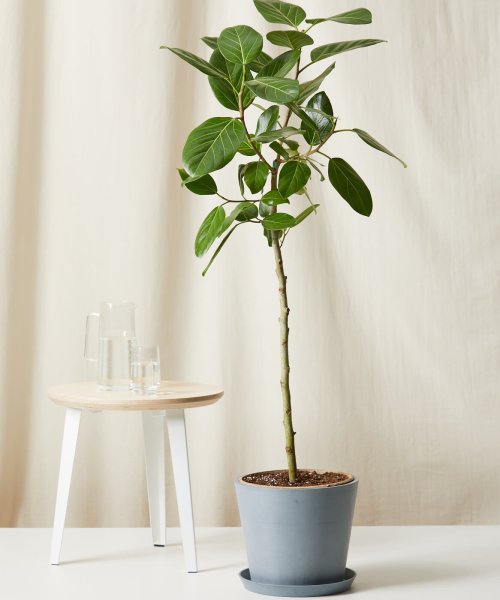
Ficus Audrey — $249.00
3. Ficus benjamina, aka weeping fig
“Ficus benjamina is really cool if you want something that looks more like a Bonsai tree,” says Hurst. “They’re really great to have for oxygen. They don’t require a lot of water. They don’t need much care except for appropriate lighting.”
If you’re looking for something with a little more height, Pangborn recommends the ficus Danielle, which is a variety of weeping fig with a rounded canopy and small, shiny, bright green leaves. Before you add anything to your cart, though, know that this plant requires indirect bright light.

Ficus Danielle — $169.00
4. Ficus triangularis, aka triangle ficus (variegated)
Hurst thinks that what draws people to the ficus triangularis is the shape of its leaves. As the name suggests, this plant’s leaves are triangular, which is a bit different from the look of your average houseplant.
While you can’t go wrong with picking the triangle ficus as one of your new low-maintenance ficuses, Hurst recommends shopping for a variegated triangle ficus. “It’s got more of a two-color tone, like a creamy and a green,” says Hurst, adding that the variegated version is “a little bit prettier” than the non-variegated plant.
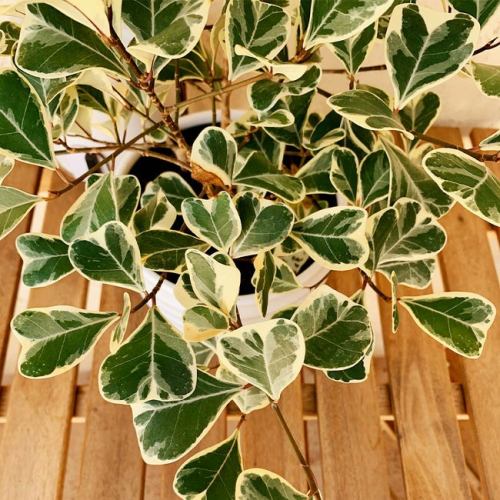
Ficus triangularis — $36.00
5. Ficus umbellata, aka umbrella ficus
According to Pangborn, this plant “can add some height and drama without taking up a lot of floor space,” which means it’d be a perfect purchase if you’re working with a smaller space.
The plant grows up instead of out and features textural, heart-shaped leaves. In terms of low-maintenance ficuses that are reminiscent of fiddle-leaf figs, the umbrella ficus might just have the best of both worlds. “While it has a similar look to the fiddle-leaf fig, it’s not as finicky,” says Pangborn. “Its leaves droop when it’s ready for a drink and it enjoys an area with bright light.”
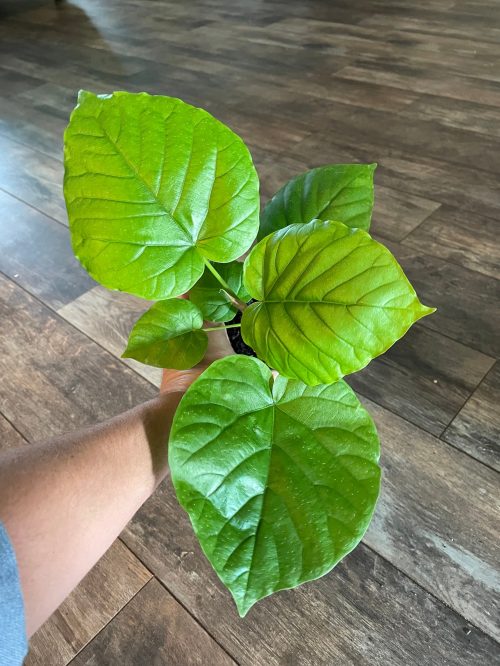
Umbrella ficus — $29.00
Of course, low-maintenance does not equal no maintenance with any plant. In order to properly care for your low-maintenance ficuses, you’ll need to become familiar with their specific requirements, including light, water, fertilizer, and repotting (ideally before you purchase the plant to decrease the risk of it dying).
Pangborn and Hurst say that, ideally, you should keep your ficuses by a window, where they can get exposed to indirect sunlight. As far as nourishment is concerned, these tree-like plants are typically watered one a week or biweekly. Fertilizer and repotting requirements vary from plant to plant, so try to ask about that when you purchase your new plant baby.
Which plants should go in which rooms based on lighting needs? Watch the video below to find out.
Oh hi! You look like someone who loves free workouts, discounts for cutting-edge wellness brands, and exclusive Well+Good content. Sign up for Well+, our online community of wellness insiders, and unlock your rewards instantly.
Sign up for the Well+Good SHOP Newsletter
Get exclusive deals on wellness, beauty, fitness, and food products that have been hand-picked by our editors.
Got it, you've been added to our email list.




